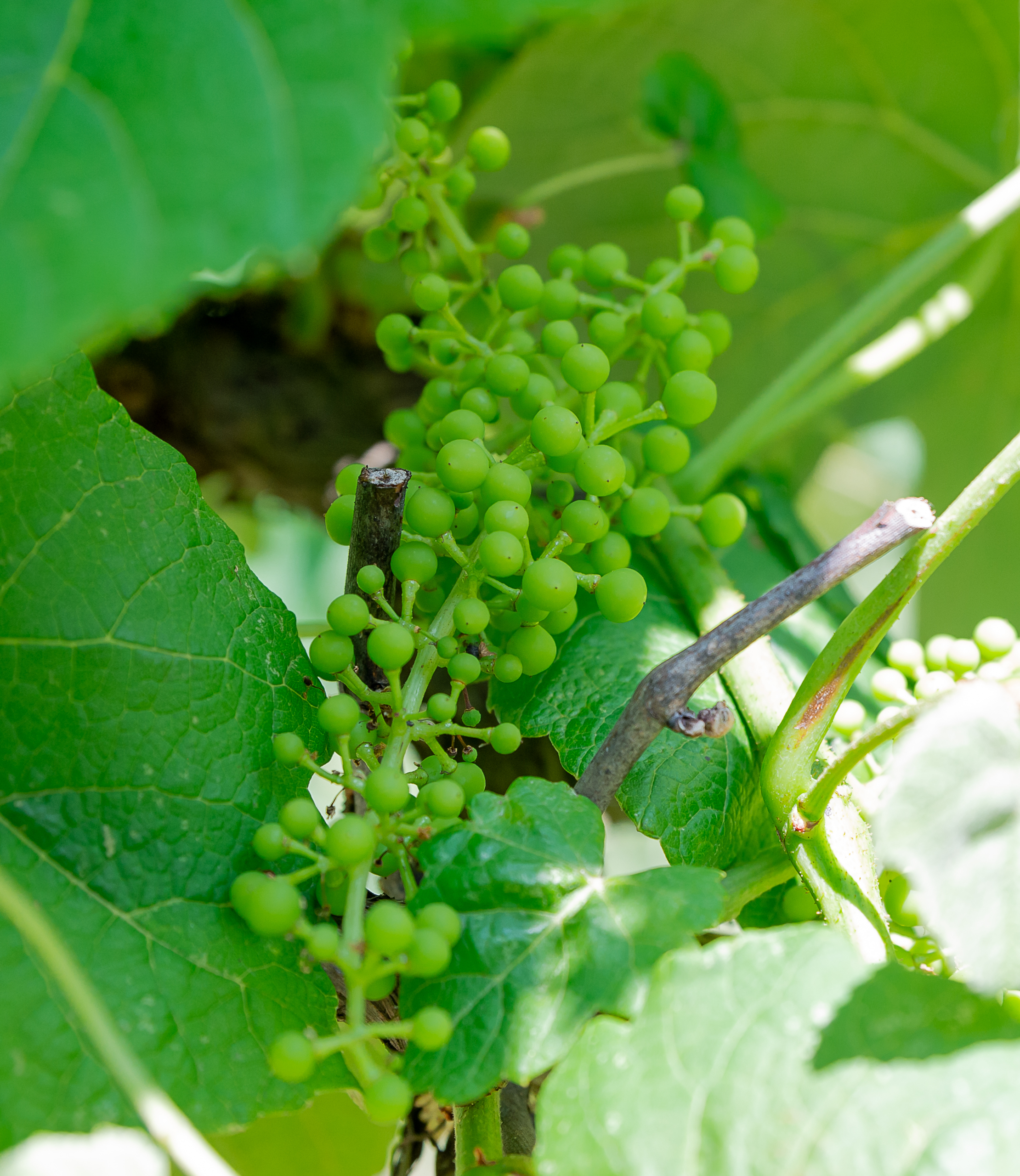I’m no sommelier, but I do enjoy a glass of wine. I’m also partial to fresh fruit as well as to jams and jellies, so it only stands to reason that grapes should be a crop I spend some energy caring for.
Many years ago, my family planted a few grape vines — hybrid varieties chosen for potential wine making. For some years we got a decent harvest, although never quite enough to bother pressing for wine.
Busy with life and other garden tasks, I left the grapes to their own resources. My luck ran out a few years ago when the vines stopped maturing fruit — it would set and then dry up before ripening. Weeds and shrubs started claiming significant space among the vines.
This spring, my sisters spent half a day cutting out the shrubs. And then I attacked the vines with my pruning shears.
I’d read to prune old wood from grape vines, leaving new growth to set fruit. I also read that one can prune up to 90% of a grape vine with no ill effect to the plant.
Also having read that vines with too many branches lack resources to mature fruits, I pruned liberally. The vines were wild and unruly, and many were migrating from their trellis. The resulting pile of cuttings sent me into temporary panic. But now new growth has started restoring confidence that I did the best for the plants.
I saved a few pruned branches to experiment with propagation.
My father warned me that the varieties we had planted were grafted onto different root stock, so I might end up propagating an unknown variety of grapes (if my cuttings were from rogue root stock growth) or vines that couldn’t survive on their own roots.
From more chats with my father and a little supplementary research, I learned that in the late 1800s a disease called phylloxera was accidentally carried from North America to Europe. Indigenous American grapes were resistant to the root louse, but it began to decimate vineyards across Europe.
Cultivated grapes were all dying. Thomas Volney Munson, Texas viticulturist, identified 27 native grape varieties, and is credited with saving French wine. His solution to the spreading disease was to graft European varieties onto American root stock, which resists phylloxera.
Most of the world’s wines are made from European grape species Vitis vinifera. These are usually grafted onto the American species Vitis riparia or Vitis rupestris, according to articles I read on the subject.
A few years ago, my mother and I noticed ripe grapes on a vine not far from our garden. They grew within reach, so we tried some. To my astonishment, they tasted just like classic grape jelly. Now I’ve learned that another American native grape species, Vitis labrusca, includes grapes like Concord and Niagara, commercially made into juice and jelly.
Since then those grapes have grown out of reach, and been enjoyed by the birds. Since I’m experimenting with propagating vines from grapes I pruned, I decided to add these tasty wild grapes to my propagation station as well.
I read that wines made from American grapes are considered inferior — they do not contain the same levels of tannins and acidity as preferred European wine-making varieties. Speculation in the articles I read suggested that American grapes have been dismissed too quickly, and that different wine-making techniques and experimentation could yield lovely wines.
I’m no wine maker; nonetheless, there may be some brewing experiments in my future.




